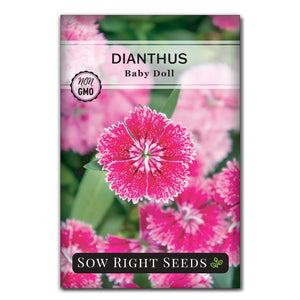10 Types of Pots: How to Choose the Best Containers for Gardening
Container gardeningThere are so many containers for growing plants. If it will hold a little bit of dirt, someone has probably used it as a pot for growing herbs, vegetables, or flowers. Not all containers work well for every type of plant. We'll discuss the 10 most common pots for growing to help you choose the best container for your plants.

When choosing a container for your garden,
consider the depth of your container.
Deep-rooted plants need tall pots to grow,
but small pots work well for shallow-rooted plants.
Ensure the pot has adequate drainage,
or add some holes to the bottom yourself.

Types Pots and Containers for Gardening
You’ll see all of these types of containers with thriving, healthy plants. Some, like glazed ceramic, may be chosen for their looks. While others, like fabric grow bags, are chosen for their utility.
1 - Clay
Clay or terra cotta pots are attractive, inexpensive, and used by almost everyone. They are porous, allowing air to pass through to the roots of plants. However, your plants may need to be watered more often. Clay pots work well for drought-tolerant plants. They break easily, but they are also inexpensive to replace.
2 - Glazed Ceramic
Glazed ceramic plant pots are quite beautiful. They are typically smaller and are especially good for houseplants. Large ones can be heavy and expensive. They hold moisture in the soil well. Ceramic pots are often fragile and will crack with temperature changes. Reserve these special containers for indoor gardening or a sheltered spot.

3 - Concrete
Concrete or stone containers are super durable and heavy. These options are well-suited as permanent fixtures and are excellent for keeping plants secure in windy areas. However, they may be too heavy for balcony or rooftop gardens, especially once filled with soil. They may also require a lot of watering when they heat up in the sunshine.
4 - Hypertufa
Hypertufa is a mix of materials with Portland cement as a base. This molded material looks like rock or concrete, but it’s light and porous. Hypertufa can be a fun medium for DIYers who want to create unique containers. They can also handle outdoor weather conditions.
5 - Plastic
Plastic or resin pots are lightweight and weather-resistant. They are often made in styles that resemble glazed pots, terra cotta, or other materials. Plastic pots retain water well and can withstand temperature changes. However, they tend to be lightweight and can tip over easily in windy spots. Adding a few stones in the bottom can help to weigh them down. Plastic pots are versatile and work in most container gardening situations.

6 - Lined Hanging Baskets
Lined hanging baskets are usually made of coco fiber or sphagnum moss lining a metal-framed base. These containers are attractive displays for trailing flowers and decorative vines. They can be lined with plastic to prevent the soil from drying out, and they need to be replaced periodically as the fiber breaks down. They are perfect for hanging on porches for a colorful summer flower display.

7 - Metal
Galvanized metal containers are common choices for raised beds. They can be lightweight and portable (sheet metal) or heavy and permanent (cast iron). Metal containers won’t break down with temperature changes, but rust can be an issue. Metal can heat up quickly in the summer, drying the soil and damaging roots. Lining the container can help insulate the roots.
8 - Wood
Wooden barrels and window boxes are good choices for their attractive looks and temperature resistance. Wood containers will rot over time, so be prepared to recoat the finish or replace them periodically. Wood is also an excellent option for those who like to build their own containers.

9 - Grow Bags & Fabric Pots
Fabric grow bags are cropping up everywhere because they are inexpensive and easy to store in the off-season. Look for a breathable fabric with a blend of fibers made to hold up to water and weather. Plants often thrive in these containers, thanks to the airflow around the roots. They can be messy, so choose the right location.
10 - Repurposed Containers
Do-It-Yourselfers have made creative container gardens out of repurposed egg cartons, wooden crates, milk jugs, old pots or cans, broken crockery, boots, and more. Your imagination is the limit. Just consider your materials and make sure there’s good drainage.

One last note: use food-safe materials for anything you intend to eat. If your chosen container isn’t food safe, a liner or container within a container works well. You could hide a food-safe plastic pot inside a stack of repurposed tires, for example. The tire will add stability and visual interest, while the pot protects your plants from toxic chemicals.
Mixing and matching different types of containers allows you an extra dimension of creativity as a gardener. Use whatever works for you, and don’t be afraid to change it up and try new things!
Written by Teresa Chandler
Want to learn more about container gardening? Here are some helpful articles.







Leave a comment